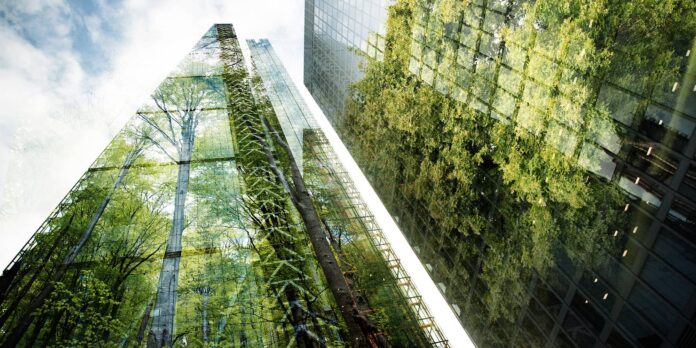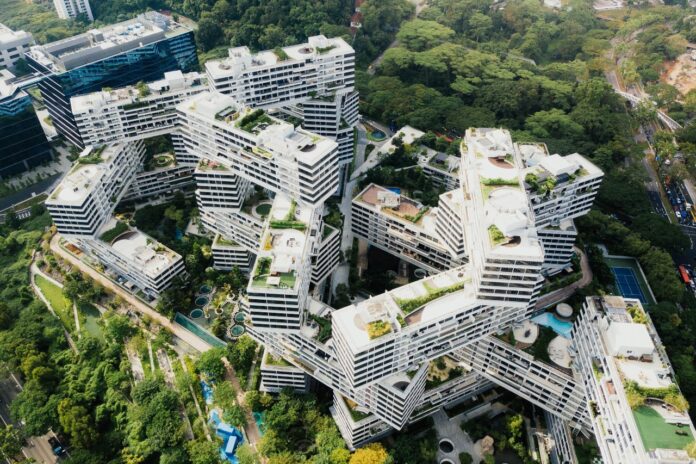
In today’s world, where environmental consciousness has evolved from a choice to a necessity, sustainable property investments have become a key innovation driver in the real estate sector. These investments are more than a response to environmental concerns; they offer significant economic benefits, making them an increasingly attractive option for global investors.
Cost Efficiency and Enhanced Asset Value of Sustainable Properties
One of the most significant advantages of sustainable property investments is their cost efficiency. Properties designed with sustainability at their core often incorporate energy-efficient systems, water-saving fixtures, and advanced waste management practices. These measures not only reduce the environmental footprint but also significantly cut down operational costs. The World Green Building Council reports that green buildings can reduce energy consumption by up to 50%, which translates into considerable savings in utility costs.
Beyond cost savings, sustainable properties frequently enjoy higher asset values. The rising demand for eco-friendly living and working spaces has increased their market desirability. These properties generally have higher occupancy rates, and longer lease terms, and command higher rents than conventional properties. This enhanced asset value protects the investment from market fluctuations, providing a long-term financial advantage.
Shifting Investor and Consumer Preferences Towards Sustainability

The movement towards sustainable property investment reflects a deep change in investor and consumer mindsets. Ethical and sustainable practices are increasingly influential in decision-making processes. The Global Sustainable Investment Alliance noted a 34% increase in investment assets from 2016 to 2018, demonstrating a strong trend towards eco-friendly investment options.
Tenant preferences mirror this shift, with an increasing number leaning towards properties that offer healthier, more sustainable environments. This preference is especially notable among millennials, who are often willing to pay more for green living spaces. This emerging trend opens a lucrative market segment for investors focused on environmental responsibility.
Government Incentives and Regulatory Compliance Benefits
Government incentives for sustainable development further encourage this investment trend. These incentives range from tax credits and rebates to financial support for obtaining green building certifications like LEED (Leadership in Energy and Environmental Design). Investors leveraging these incentives enhance the economic viability of their sustainable property investments.
In an era of tightening environmental regulations, investing in sustainable properties is also a strategic move to ensure compliance and reduce the risk of future liabilities. This proactive approach to regulatory adherence not only mitigates potential financial penalties but also strengthens the property’s reputation as an environmental steward.
Risk Mitigation and Long-term Stability
Investing in sustainable properties offers significant risk mitigation and promotes long-term stability, crucial in today’s volatile market. These investments align with increasingly stringent environmental regulations, reducing the risk of non-compliance costs. As the world gravitates towards a greener future, properties that adhere to sustainability standards are less likely to face obsolescence or require costly upgrades.
Moreover, features like energy efficiency and use of renewable resources make these properties more resilient against fluctuating energy prices and resource scarcity. This resilience translates to a more stable investment value over time, providing a buffer against market fluctuations.
Additionally, sustainable properties often exhibit a lower risk profile, attracting investors who are increasingly conscientious about the environmental impact of their portfolios, thus ensuring a stable demand in the real estate market.
The Influential Role of Investment Funds in Sustainable Real Estate

Institutional investors and funds, such as the Sustainable Residential Real Estate Fund managed by Hanseatic, play a pivotal role in shaping the sustainable property investment landscape. By prioritizing properties that meet stringent environmental standards, these funds not only generate competitive returns for their investors but also contribute significantly to sustainable development goals.
Enhancing Community Well-being Through Sustainable Development
Sustainable properties often include features that enhance residents’ quality of life and foster a sense of community. These features, such as green spaces and health-promoting amenities, create more livable and engaging communities. Such properties tend to attract and retain tenants more effectively, leading to higher occupancy rates.
Integrating Advanced Technologies for Enhanced Sustainability
The integration of cutting-edge technologies like the Internet of Things (IoT), smart energy management systems, and AI-driven predictive maintenance is transforming the sustainability of properties. These technologies not only improve operational efficiency but also provide actionable insights for better property management and investment decision-making.
Market Resilience and Future-Proofing Investments
Sustainable properties demonstrate a higher degree of market resilience. In times of economic uncertainty or regulatory shifts, these properties maintain their appeal and value, offering stable and secure investment options. Moreover, as the global focus on sustainability intensifies, investing in sustainable properties aligns with anticipated market trends and future regulatory changes, effectively future-proofing these investments.
Driving Innovation in the Real Estate Sector Through Sustainability
Sustainability is a significant driver of innovation in the real estate sector. The development of eco-friendly materials and the adoption of green construction practices are at the forefront of emerging trends in real estate. These innovations not only benefit the environment but also stimulate economic growth and industry-wide innovation.
Impact of Sustainability on Property Insurance and Financing

The sustainable nature of these properties also impacts insurance and financing. Insurers increasingly recognize the reduced risk profile of sustainable properties, often resulting in lower insurance premiums. Financial institutions are also more inclined to offer favorable financing terms for green properties, recognizing their reduced risk and enhanced value.
Global Perspective and Growing Momentum of Sustainable Real Estate
Globally, sustainable real estate is gaining traction, particularly in regions experiencing rapid urbanization where sustainable properties are viewed as solutions to environmental challenges. This global perspective broadens the demand for sustainable properties, opening up international investment opportunities.
Conclusion
The economic benefits of sustainable property investments are extensive and multifaceted, encompassing a range of advantages that extend beyond mere cost savings. These investments represent a forward-thinking approach that not only aligns with but also capitalizes on evolving investor and consumer preferences toward sustainability.
The advantages also extend to risk mitigation. These properties are typically better equipped to comply with future environmental regulations, reducing the potential for costly retrofitting and compliance penalties. This foresight positions investors to benefit from long-term stability and lower risk profiles, making these investments particularly attractive in an increasingly volatile economic landscape.





